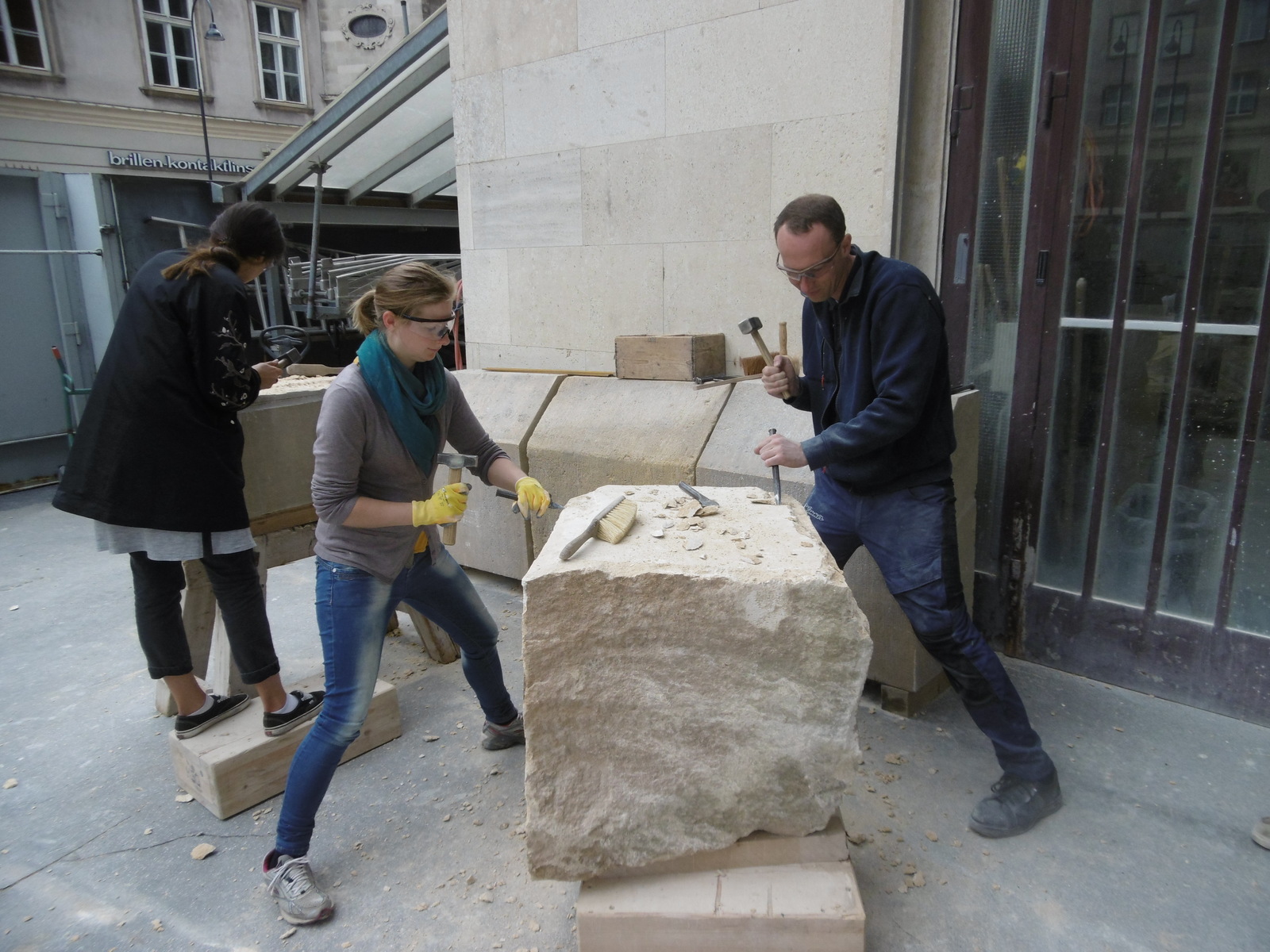Cathedral workshops in Austria (St. Stephan in Vienna and the Mariendom in Linz)
Traditional craftsmanship in Upper Austria, Vienna, inscribed 2018
For centuries, the cathedral workshops ("Dombauhütten") of St. Stephan in Vienna and the Mariendom in Linz have been places where the restoration and maintenance techniques relevant to historical structures as well as social practices and rituals are handed down from generation to generation. In this way, such workshops contribute to the sustained and deep-reaching maintenance of their respective cathedrals as well as guarantee that traditional craftsmanship techniques are preserved and passed on.
Since the 12th century, the cathedral workshop (Dombauhütte) at St. Stephan (St. Stephen’s Cathedral) in Vienna has been responsible for the cathedral’s construction and maintenance. It has thus passed on the entirely manual handcrafting techniques involved along with knowledge of the Cathedral’s construction in terms of stone cutting and masonry techniques as well as in terms of its arches in a nearly unbroken tradition that goes back to the Middle Ages. The cathedral workshop of the Mariendom (also known as the New Cathedral) in Linz has practised sculptural stonemasonry and passed it on from master to apprentice ever since its establishment in 1862. These cathedral workshops are responsible mainly for preserving the historically listed physical substance of their respective buildings, for which reason they must also observe and document damage that occurs to the stone architecture. In doing so, they employ medieval working techniques and new technologies side by side since modern processes are now available to supplement the traditional masonry techniques via which the disintegration and weathering of stone can be slowed.
The overall head of each cathedral workshop is its Dombaumeister [cathedral master builder]. The two workshops both employ master stonemasons, stonemasons, and sculptors as well as apprentices and other helpers in order to continually restore and/or replace damaged or destroyed masonry, sometimes sculpting it anew. The special skills required, skills that go far beyond the knowledge and practices typically needed at independent construction and masonry businesses today, are passed on by the cathedral workshops via actual practice. New workshop members are either trained as apprentices or arrive after having completed stonemasonry apprenticeships or comparable courses of training. An essential and vital characteristic of the cathedral workshops is the high degree of individual responsibility borne by the individual stonemasons, who work on various details in a largely independent manner.
Constant maintenance work on these cathedral buildings guarantees the preservation and transfer of the relevant knowledge, which is otherwise frequently threatened by technological advances and/or cost-cutting. Programmes for the exchange of craftspeople with other European cathedral workshops, training events for students and craftspeople, special tours, and other measures aim to disseminate and preserve the cathedral workshops’ knowledge. The drawings and plans from the cathedral workshop at St. Stephan, which were archived from the 14th century onward and joined the holdings of the Academy of Fine Arts during the 19th century, now represent the world’s largest collection of medieval design sketches, amounting to 60–80% of worldwide holdings. The cathedral workshop in Linz, for its part, is home to an archive of cathedral plans that has been completely digitised and is added to continually thanks to ongoing documentation in the form of daily and annual work reports by the Dombaumeister.
Contact
office@schafferarchitekt.at
https://www.dioezese-linz.at/site/mariendom/domcenter/domfuehrungen
Downloads
- Application form (in German only) 354 KB (pdf)
- Expertise (in German only) Dahm 430 KB (pdf)
- Expertise (in German only) Girtler 151 KB (pdf)
- Expertise (in German only) OOEL 672 KB (pdf)
- Expertise (in German only) Sandgruber 255 KB (pdf)


![[Translate to EN:] © J. Ségur/ZED, with the permission of UNESCO](/fileadmin/_processed_/d/b/csm_Convention-2003-IKE_0832a6a47d.jpg)
![[Translate to EN:] © ÖUK](/fileadmin/_processed_/3/9/csm_P1011318_7eac86402f.jpg)

![[Translate to EN:] © Weitblickfilm](/fileadmin/_processed_/9/8/csm_Workshop_17_2dee1e1fd8.jpg)